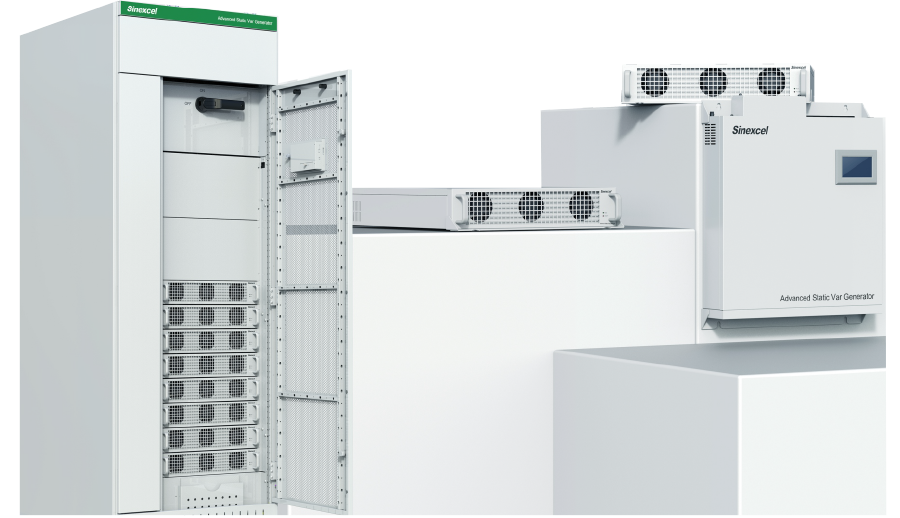
Our products
ASVG ADVANCED STATIC VAR GENERATOR
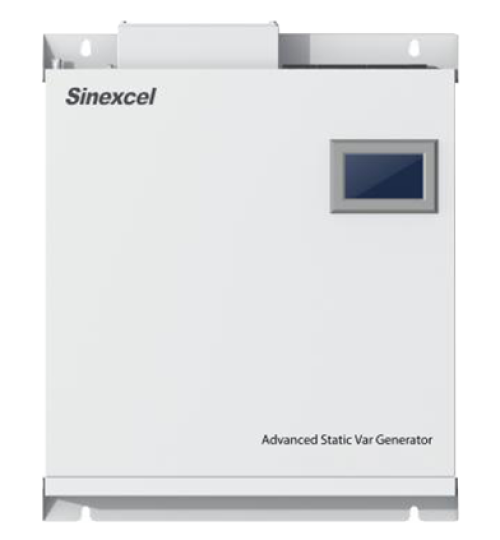
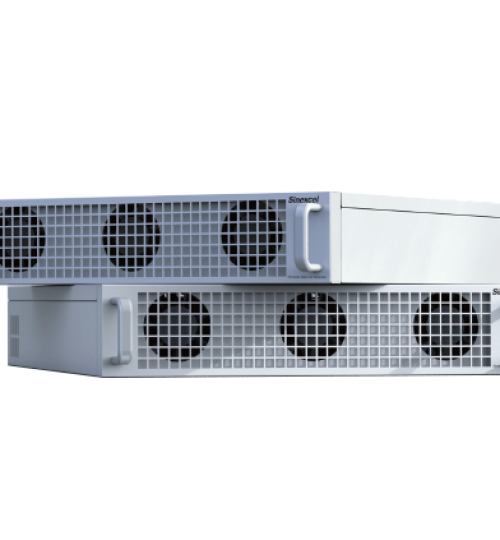
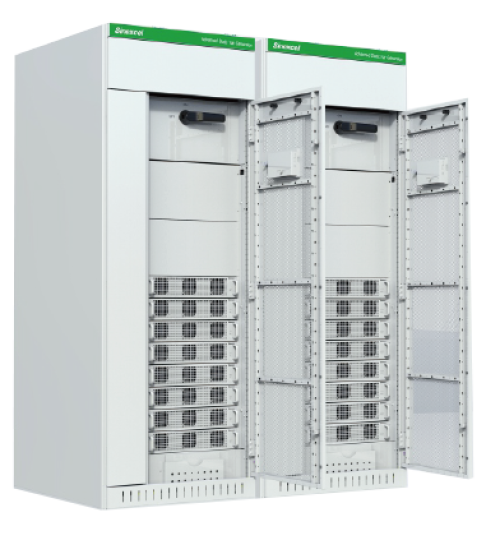
Introduction
Advanced Static Reactive Power Generators or Advanced VAR Generators (ASVG) are sophisticated power electronic devices designed to simultaneously provide dynamic reactive power compensation and mitigate harmonics (up to order 13) in electric power systems.
By rapidly adjusting reactive power output and canceling harmonics, ASVGs help maintain voltage stability, improve power quality, and enhance overall grid efficiency. They are particularly valuable in environments with fluctuating loads and varying power demands.
Advantages and main features
Peak efficiency >99% Automatic fine-tuning of THDi <5%
(harmonics of orders 2 to 13)
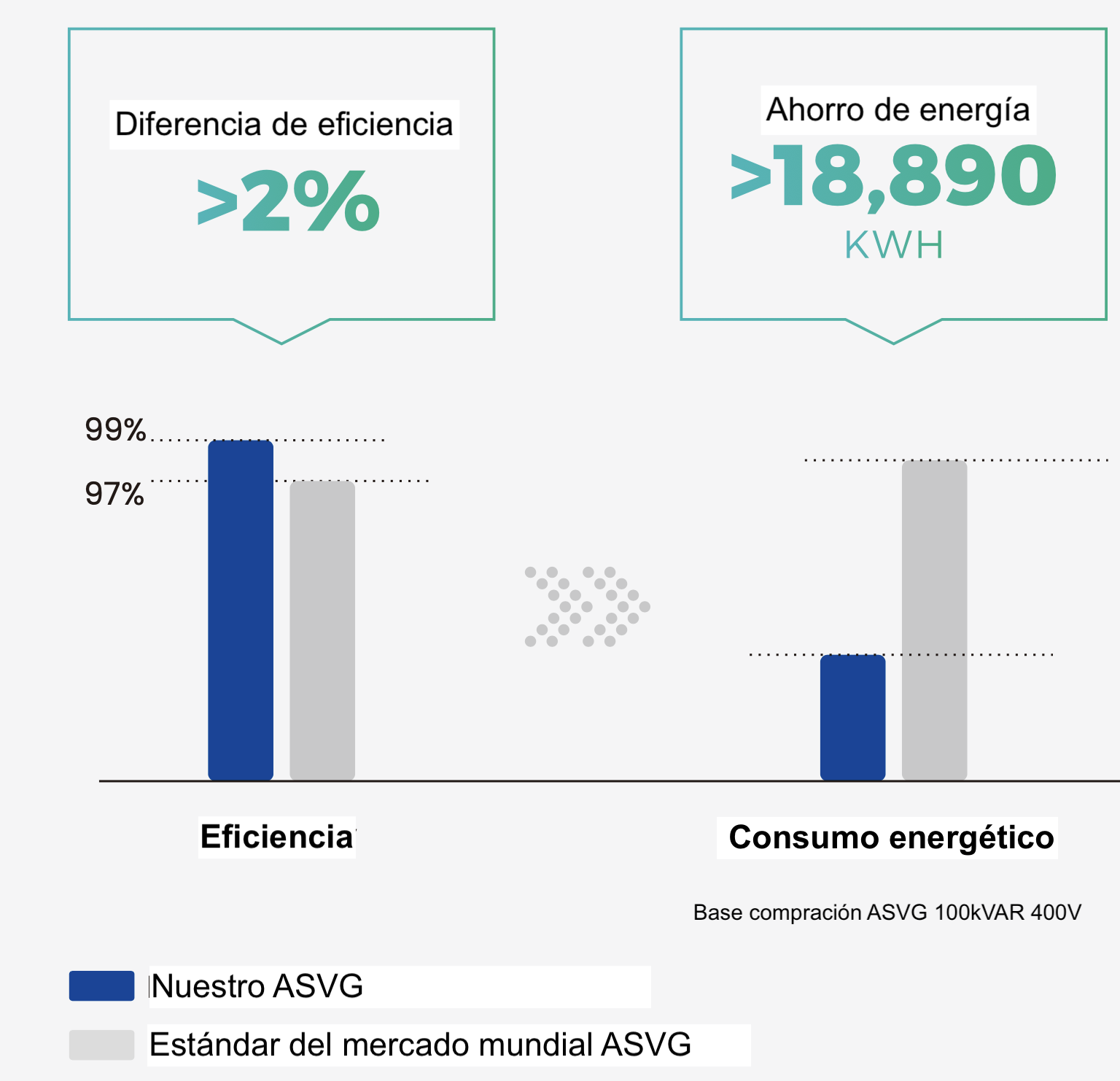
Evolution of formidable performance through SiC MOSFET technology
- Ultra high efficiency 99%
- Huge 97% harmonic compensation
- Small dimensions with huge capacity of 24kg
Superlative advances in applications
- Automatic fine tuning
- Protective sealing
- Easy maintenance
- Flexible cabinet with top ventilation
ULTRA HIGH EFFICIENCY
Performance advancement thanks to SiC technology
Silicon carbide (SiC) MOSFETs achieve ultra-high efficiency primarily due to their wide bandgap, which leads to lower on-state resistance (Rds(on)), faster switching speeds, and reduced switching losses. These properties enable SiC MOSFETs to operate at higher frequencies and temperatures with improved overall performance, resulting in more efficient power conversion systems.
What benefit will the user get from ultra-high efficiency of 99%?
Savings on electricity bills, higher return on investment
VERY HIGH RATE OF HARMONIC COMPENSATION
Performance advancement thanks to SiC technology
SiC technology offers much higher switching frequency (average 40KHz and maximum up to 95KHz) than our ASVG. With the high switching frequency and exclusive algorithm design, our ASVG achieves the huge harmonic compensation rate.
> 97% harmonic compensation (harmonics of order 2 to 13)
AUTOMATIC FINE ADJUSTMENT
Momentous breakthrough enabled by SiC MOSFET technology
Our ASVG updates the software algorithm and when the TCs are on the source side, it sets up a closed loop. The special algorithm can automatically identify and correct the compensation output result and process without manual adjustment.
Automatic fine tuning makes adjustments to obtain THDi <5% , so the adjustment process is completed in just a few minutes.
Easy software operation and simple hardware installation. Only power cables and a set of CTs are required to configure the ASVG. The automatic adjustment function achieves excellent and intelligent compensation effects, providing users with a simple and efficient commissioning experience.
Note: Harmonic compensation covers harmonic orders 2 to 13. Higher harmonic orders must apply an AHF solution

After several years of persistent research and development, our technology partner’s R&D team launched the resonance algorithm 2.0. Based on the suppression of resonance, it ushered in a new era by achieving the requirement of THDi<5% through perfect sine waves to achieve excellent quality in users’ networks.
THDu Mitigation
Another significant advance for energy efficiency
Extreme voltage distortion can cause multiple zero crossings of the voltage waveform. For equipment where proper sequence of operations depends on a zero crossing for synchronization, voltage distortion can cause malfunctions. Additionally, fifth harmonic voltage distortion can cause serious problems in three-phase motors.
Operating principle
It compensates the fundamental frequency and harmonics by rapidly generating reactive currents continuously and without capacitors. The ASVG measures the frequencies of all the currents [1] demanded by the load and for each of them it injects a current [2] that counteracts it so that the current consumed by the load as seen from the network [3] flows perfectly in phase with the fundamental voltage.
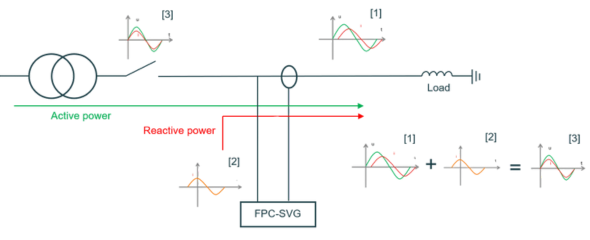
Applications
- Industrial Plants
- Heavy Industries: Steel mills, aluminum smelters and chemical plants.
- Manufacturing: Semiconductor manufacturing, automobile production, and textile factories.
- Benefits: Mitigates voltage surges and dips, improves power factor and reduces energy costs.
- Renewable energy systems
- Wind Farms: Compensates for the fluctuating reactive power demand of wind turbines.
- Solar Power Plants: Stabilizes voltage variations caused by intermittent generation of solar energy.
- Benefits: Improves network integration, improves energy efficiency, and supports network stability.
- Commercial buildings
- Office Complexes: Maintains power quality for sensitive electronic equipment.
- Shopping Centers: Ensures stable operation of HVAC, lighting and escalator systems.
- Benefits: Reduces voltage fluctuations, prevents equipment damage and reduces energy bills.
- Public services and energy distribution
- Substations: Provide reactive power support to maintain voltage levels.
- Distribution Networks: Improves energy quality for end consumers.
- Benefits: Improves grid reliability, reduces transmission losses and supports the integration of renewable energy.
- Telecommunications
- Data Centers: Ensures reliable power supply for critical data storage and processing.
- Base Stations: Maintains voltage stability for uninterrupted communication services.
- Benefits: Improves power quality, prevents data loss, and improves system uptime.
Benefits
ASVGs offer significant advantages in terms of power quality, system stability and operational efficiency in various applications and industries.
- Reduced energy costs
- Reduces reactive power consumption, which translates into lower electricity bills.
- Improves the overall efficiency of the electrical power system.
- Support for the integration of renewable energies
- Stabilizes voltage levels for wind and solar power plants.
- Facilitates the integration of renewable energy sources into the grid.
- Improved power quality
- Reduces voltage dips, swells and flickers.
- Minimizes harmonic distortions and transient events.
- Improved voltage stability
- Provides fast and precise tension control.
- Withstands voltage levels during maximum load conditions.
- Increased system reliability
- Mitigates the risk of equipment malfunction and damage.
- Improves the reliability of sensitive industrial and commercial processes.
- Optimized power factor
- Improves the power factor, reducing energy consumption and costs.
- Avoid utility company penalties for poor power factor.
- Scalability and flexibility
- Modular design allows for easy expansion and adaptation.
- Modular design allows for easy expansion and adaptation.
- Environmental benefits
- Reduces energy losses and greenhouse gas emissions.
- Promotes the use of clean energy technologies.
